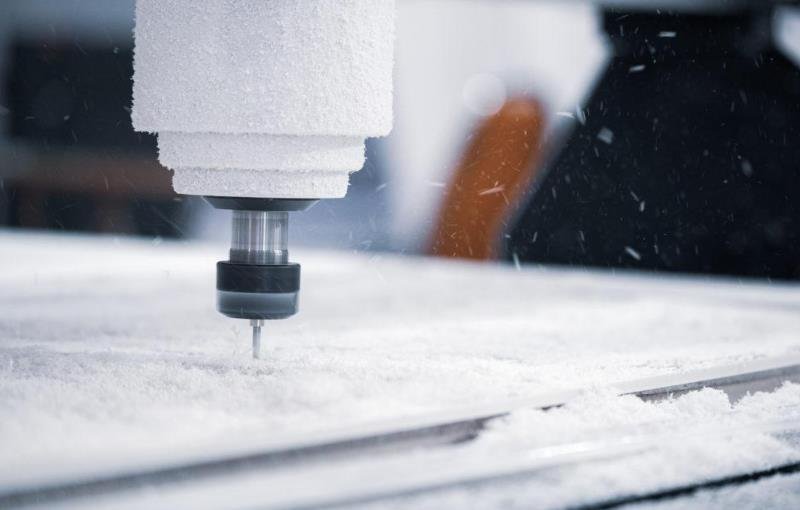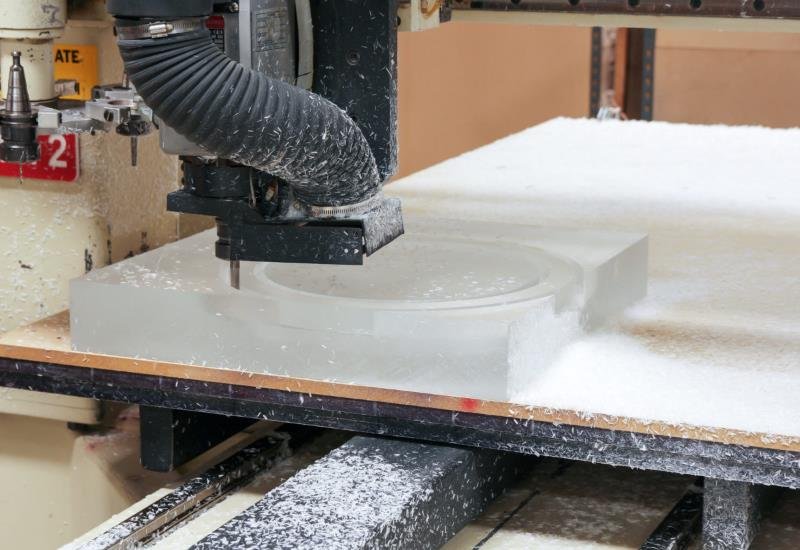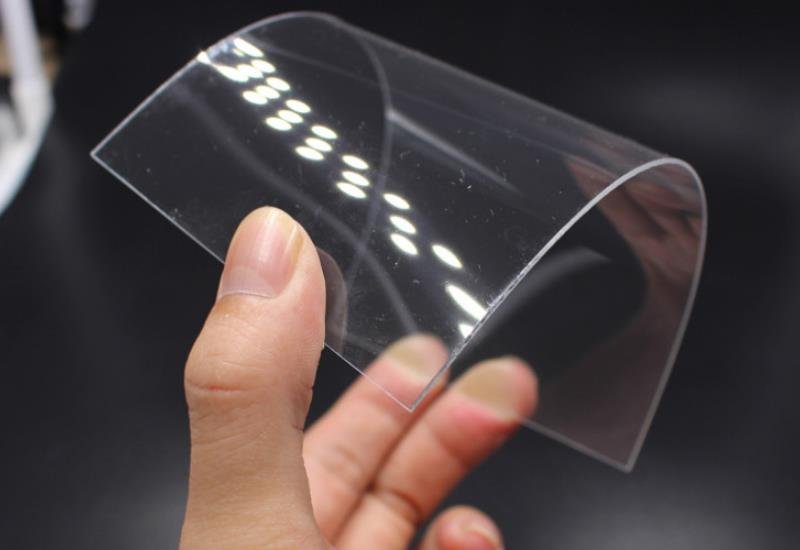There’s no doubt that the industrial and manufacturing sectors are constantly evolving, with an increasing need for new technologies and materials to enhance the overall durability and efficiency of products. With consistent advancements in the field, it is crucial for businesses to stay up-to-date with the latest developments in order to maintain their competitive edge.
If you add the fast-paced nature of the industry to the increasing demand for customisation, it’s easy to see why there’s a growing need for customised materials. When you have unique product requirements, standard materials may not always be the best fit. Given the widespread use of plastics in the manufacturing process, cut-to-size options have emerged as a popular solution for businesses looking to streamline their operations.
Table of Contents
What Are the Benefits of Cut-to-Size Plastics?

Naturally, you want a tailored solution when you have a specific requirement in terms of size, shape, or thickness. While this may seem like the obvious choice, there are several other benefits of opting for tough and long-lasting plastics with cut-to-size capabilities.
Enhanced Customisation Options
Of course, there’s a lot more liberty and flexibility that comes with custom-made materials that inherently give you more control over your finished product. Whether that’s colours or textures, transparency or opacity, or even a specific chemical composition needed for your product to perform optimally in its intended environment.
When you have this level of control over your manufacturing process, you effectively enhance the overall productivity and quality of your product. You don’t have to waste time to figure out a way to make standard materials work for you when they’re simply not the right fit or wonder whether the items you’re producing will meet your customers’ expectations.
Cost-Effective Solution
Perhaps one of the more underrated perks of using plastics with cut-to-size capabilities is their cost-effective nature. Since you’re getting exactly what you need and nothing more, you’re not wasting precious materials or resources that could be used elsewhere. All of the items are specifically designed for your requirements, eliminating potential mishaps or losses.
Not to mention the fact that you don’t have to invest in cutting machines yourself, which may be a significant expense for businesses just starting out or looking to reduce costs. After all, these tools require regular maintenance and upkeep, which is yet another area that requires financial investment and human resources.
Versatile Applications
Plastic is a generally versatile material, thanks to its lightweight nature and the ease with which it may be moulded and shaped. As such, you can use the products from cut-to-size plastic services to accommodate different needs and requirements.
This can include anything from signage and displays to industrial equipment and packaging materials. How well the material performs in each instance depends on the type of plastic used, which can greatly influence the product’s strength, durability, and other characteristics.
What Is the Best Type of Plastic?

While there’s no standard option that caters to every need, there are several choices that deliver reliable and consistent results across the board. What you decide to go for in the end depends on the specific application or function you have in mind.
ABS (Acrylonitrile Butadiene Styrene)
Quite the mouthful, this acronym is truly one of the most versatile options available. It’s commonly used in low-cost consumer applications, including toys and electronic casings, thanks to its high impact resistance and relatively low cost. Even if it doesn’t quite measure up to engineered plastics in terms of strength, it more than makes up for it in its user-friendly nature and relatively low cost.
Alupanels (Aluminium Composite Panel)
As the name suggests, this blend of plastic and aluminium takes two already efficient materials and combines them to make something more resilient than either on their own. It relies on the resilience and strength of aluminium combined with the lightweight and easy-to-customise nature of plastic, which in turn results in an all-around useful and practical material. You can use it as part of large structures but can also cut it into smaller pieces without losing any of its strength.
Cast Acrylic
Even though looks aren’t everything when it comes to the performance of any given material, it doesn’t hurt to have options that are aesthetically pleasing. Perhaps the best example in this regard is cast acrylic, which despite its striking appearance is also highly durable and resistant to scratching. In other words, it can be used in environments with a lot of foot traffic or potential hazards without losing its distinct look or dexterity.
Multiwall Polycarbonate
This one may seem relatively basic compared to the other options on this list, but it’s precisely because of its simplicity that it’s so widely used. It offers unbeatable thermal insulation while also being impact-resistant, which can be quite beneficial in cases where you need to protect delicate materials or products from extreme temperatures or weather conditions. It doesn’t add significant weight to your final product, and it’s easy to work with due to its highly flexible nature.
PET (Polyethylene Terephthalate)
Next up is a more sophisticated form of plastic, which boasts high tensile strength and impact resistance. Both of these factors influence its versatility and reliability, with the former dictating its ability to withstand heavy loads and the latter affecting how easily it can be manufactured. It’s most commonly used in protective packaging, but its applications are far more diverse and can include anything from textiles to automotive parts.
PETG (Polyethylene Terephthalate Glycol)

Very similar in composition to PET, this material is essentially a modified version with better chemical resistance. As such, it’s better suited for machinery or equipment that may be exposed to various substances on a regular basis. Additionally, it has greater transparency than its predecessor, which can be an asset in certain industries. For instance, it can be used to make protective shields or barriers while allowing for clear visibility.
Polypropylene
Manufacturers that prioritise durability above high-tensile strength may find polypropylene to be their ideal pick. It’s resistant to chemicals and has excellent fatigue resistance, which is why it’s used to make many types of plastic containers, such as food packaging. It’s relatively lightweight and can be coloured to various degrees, ranging from transparent to opaque.
Polycarbonate
Another star performer when it comes to impact resistance, polycarbonate is often the go-to option for bulletproof glass, riot shields, and similar goods. It’s also used in a variety of other industries due to its innate strength and ability to withstand harsh environments. In addition, it has superior optical clarity compared to most other plastics, allowing for great light trans
PVC (Polyvinyl Chloride)
Finally, PVC is a widely used plastic with many practical applications. It’s relatively inexpensive and easy to produce, not to mention extremely long-lasting and resistant to chemicals. Manufacturers can use it to create anything from plastic pipes and flooring to toys and medical equipment. Its ability to be combined with other materials also gives it an edge over some other options, allowing for a wider range of applications without sacrificing strength or durability.





